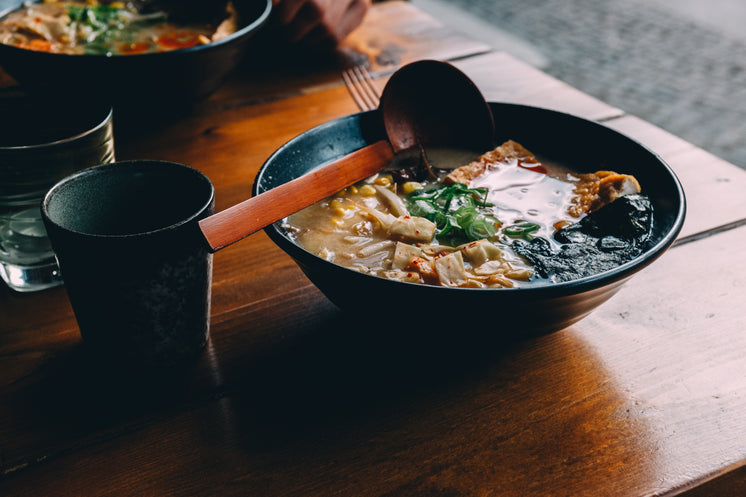
How To Make Egg Drop Soup Without Cornstarch: Healthier Thickening Alternatives
Thickeners for Egg Drop Soup
Cornstarch
Cornstarch is a standard thickener utilized in egg drop soup. It is produced from corn and is a good supply of carbohydrates. However, some people could favor to make use of healthier thickening options.

There are many several sorts of thickeners that can be used in egg drop soup. Some in style choices embrace:
- Flour
- Potato starch
- Arrowroot powder
- Tapioca starch
Each of these thickeners has its own unique properties. Flour is an efficient all-purpose thickener that’s simple to use. Potato starch is a good alternative for soups and stews as a result of it creates a smooth, creamy texture. Arrowroot powder is an effective alternative for thickening sauces and gravies as a end result of it does not have a powerful taste. Tapioca starch is an efficient alternative for thickening desserts as a outcome of it creates a transparent, shiny end.
To use a thickener in egg drop soup, merely whisk it into the soup till it reaches the specified consistency. Be certain to cook the soup for a few minutes after including the thickener to permit it to thicken utterly.
Pros
Pros of Using Thickening Agents in Egg Drop Soup:
– Adds texture and body to the soup.
– Enhances the flavor of the soup.
– Helps the soup to remain heat for longer.
– Makes the soup extra filling and satisfying.
-Versatile and can be utilized with quite a lot of components and flavors.
Cons
The primary con of those thickeners is that they will alter the taste and texture of the soup.
Arrowroot and tapioca starch could make the soup slimy if not used correctly.
Potato starch could make the soup too thick and pasty.
Flour can make the soup cloudy and gritty.
Egg Whites
Thickeners for Egg Drop Soup
Egg Whites
- Egg whites are a conventional thickener for egg drop soup. They add protein and a slightly chewy texture. To use egg whites, beat them until stiff peaks type and then slowly stir them into the recent soup.
- Egg whites may additionally be used to make a cornstarch-free egg drop soup. To do that, beat the egg whites until stiff peaks type after which add them to the hot soup. The egg whites will prepare dinner and thicken the soup as they simmer.
Pros & Cons
Pros and Cons of Thickeners for Egg Drop Soup
1. Cornstarch
- Pros:
- Creates a transparent, glossy broth
- Easy to use and regulate the thickness
- Affordable
- Cons:
- Can turn into gooey if overcooked
- Not gluten-free
2. Flour
- Pros:
- Gives soup a velvety texture
- Readily available
- Gluten-free choices (e.g., rice flour)
- Cons:
- May cloud the broth
- Requires cautious mixing to keep away from lumps
3. Potato Starch
- Pros:
- Creates a clean, opaque broth
- Retains its thickening power even when heated
- Gluten-free
- Cons:
- Can give soup a barely starchy taste
- Not as thickening as cornstarch
4. Tapioca Starch
- Pros:
- Provides a chewy texture
- Gluten-free
- Thickens soup effectively
- Cons:
- Requires pre-hydrating (soaking) earlier than use
- Can simply overcook and turn into gummy
5. Arrowroot Powder
- Pros:
- Creates a clear, glossy broth similar to cornstarch
- Gluten-free
- Helps stabilize egg whites in soup
- Cons:
- Can depart a slightly bitter aftertaste
- Less thickening energy than cornstarch
Flour
Flour is one other widespread thickening agent that can be utilized in egg drop soup. It is essential How To Make Egg Drop Soup note that flour is not going to thicken the soup as a lot as cornstarch, so you may need to use extra of it to realize the specified consistency.
To use flour as a thickener in egg drop soup, comply with these steps:
- In a small bowl, whisk collectively 1 tablespoon of flour and a pair of tablespoons of cold water till smooth.
- Bring the soup to a simmer over medium heat.
- Slowly whisk in the flour mixture. Cook, stirring continually, till the soup has thickened to the specified consistency.
If you find that the soup is merely too thick, you presumably can thin it out by adding more rooster broth or water. Conversely, if the soup is simply too thin, you can thicken it by adding extra flour combination.
Pros & Cons
Thickeners for Egg Drop Soup: Pros & Cons
Cornstarch:
Pros: Classic thickener, simple to use, inexpensive
Cons: Can create a cloudy soup, not gluten-free
Arrowroot Powder:
Pros: Gluten-free, clear thickening, delicate flavor
Cons: Requires exact measurement, can be expensive
Potato Starch:
Pros: Gluten-free, comparable thickening properties to cornstarch, less expensive than arrowroot
Cons: Can create a barely grey soup
Tapioca Flour:
Pros: Gluten-free, glorious thickening energy, yields a chewy texture
Cons: Requires pre-cooking, not readily available
Flour:
Pros: Inexpensive, can thicken and add flavor
Cons: Not gluten-free, requires cooking to take away raw flour taste
Xantham Gum:
Pros: Gluten-free, highly effective thickener, adds body to soup
Cons: Can be tough to dissolve, requires only small amounts
Potato Flakes
– Potato Flakes: Potato flakes are a great way to thicken egg drop soup with out including any additional energy or fat. They are also a great supply of fiber and potassium. To use potato flakes, merely whisk them into the soup till they are dissolved. You also can add them to the soup throughout the earlier couple of minutes of cooking.
Pros & Cons
Cornstarch
Pros:
Cons:
Flour
Pros:
Cons:
Arrowroot powder
Pros:
Cons:
Tapioca starch
Pros:
Cons:
Potato starch
Pros:
Cons:
Tapioca Starch
Tapioca Starch
Tapioca starch is a pure thickener created from the roots of the cassava plant. It is a white powder that thickens through gelatinization, which occurs when heated within the presence of water. Tapioca starch is an efficient alternative for egg drop soup because it doesn’t alter the flavour or color of the soup.
To use tapioca starch as a thickener for egg drop soup:
1. Combine 1 tablespoon of tapioca starch with 2 tablespoons of cold water in a small bowl.
2. Stir until the tapioca starch is dissolved.
3. Add the tapioca starch combination to the boiling soup.
4. Stir continuously until the soup thickens to your desired consistency.
Pros & Cons
Cornstarch is a standard thickener for egg drop soup, however it isn’t the only possibility.
There are several different thickeners that can be utilized, every with its personal execs and cons:
Flour is an effective thickener for egg drop soup, however it could make the soup cloudy. To keep away from this, make a slurry by mixing the flour with a little little bit of water earlier than including it to the soup.
Arrowroot powder is a good thickener for egg drop soup as a result of it doesn’t make the soup cloudy. It can additionally be a wise choice for people who discover themselves allergic to wheat.
Tapioca flour is an effective thickener for egg drop soup as a end result of it offers the soup a slightly chewy texture. It is also a good selection for people who are allergic to wheat.
Potato starch is an efficient thickener for egg drop soup as a end result of it gives the soup a smooth texture. It can be a sensible choice for people who discover themselves allergic to wheat.
The best thickener for egg drop soup is decided by your personal preferences. If you are on the lookout for a thickener that’s straightforward to use, cornstarch is an efficient possibility. If you’re in search of a thickener that doesn’t make the soup cloudy, arrowroot powder or tapioca flour are good choices. If you’re on the lookout for a thickener that offers the soup a barely chewy texture, tapioca flour is an efficient option. And if you’re on the lookout for a thickener that offers the soup a smooth texture, potato starch is an efficient option.
